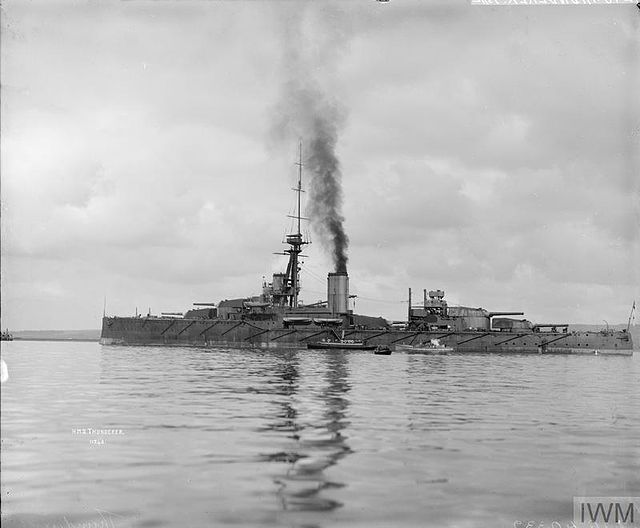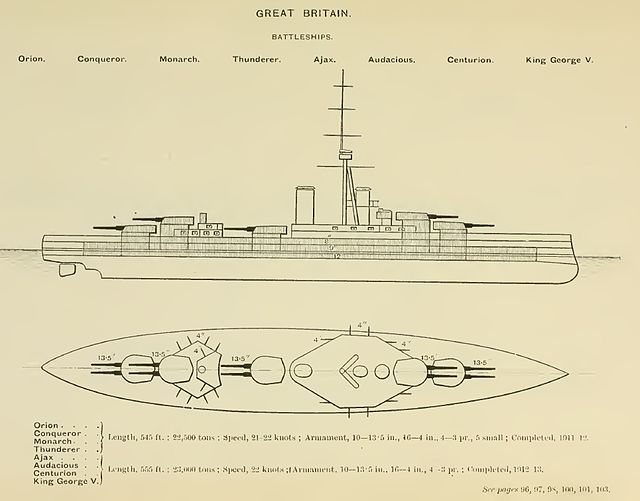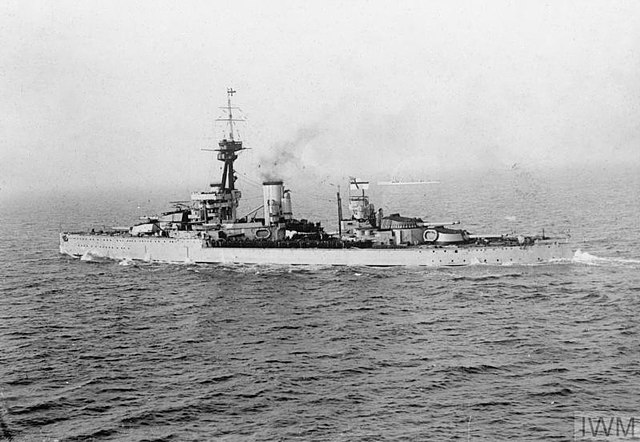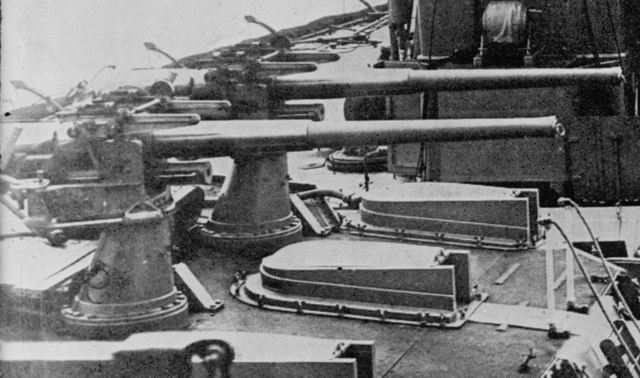The Orion-class battleships were a group of four dreadnought battleships built for the Royal Navy (RN) in the early 1910s. The first 13.5-inch-gunned (343 mm) battleships built for the RN, they were much larger than the preceding British dreadnoughts and were sometimes termed "super-dreadnoughts". The sister ships spent most of their careers assigned to the 2nd Battle Squadron of the Home and Grand Fleets, sometimes serving as flagships. Aside from participating in the failed attempt to intercept the German ships that had bombarded Scarborough, Hartlepool and Whitby in late 1914, the Battle of Jutland in May 1916 and the inconclusive action of 19 August, their service during World War I generally consisted of routine patrols and training in the North Sea.
Thunderer at anchor, shortly after completion in 1912
Right elevations and plans for the Orion- and King George V-class battleships
Aerial view of an Orion-class battleship, probably Orion herself, under way after May 1915 as the gunnery director is visible under her spotting top and her torpedo net booms have been removed.
Aft main-gun turrets of Orion, about 1911 while fitting out
The dreadnought was the predominant type of battleship in the early 20th century. The first of the kind, the Royal Navy's HMS Dreadnought, had such an effect when launched in 1906 that similar battleships built after her were referred to as "dreadnoughts", and earlier battleships became known as pre-dreadnoughts. Her design had two revolutionary features: an "all-big-gun" armament scheme, with an unprecedented number of heavy-calibre guns, and steam turbine propulsion. As dreadnoughts became a crucial symbol of national power, the arrival of these new warships renewed the naval arms race between the United Kingdom and Germany. Dreadnought races sprang up around the world, including in South America, lasting up to the beginning of World War I. Successive designs increased rapidly in size and made use of improvements in armament, armour, and propulsion throughout the dreadnought era. Within five years, new battleships outclassed Dreadnought herself. These more powerful vessels were known as "super-dreadnoughts". Most of the original dreadnoughts were scrapped after the end of World War I under the terms of the Washington Naval Treaty, but many of the newer super-dreadnoughts continued serving throughout World War II.

The Royal Navy's revolutionary HMS Dreadnought, launched in 1906, gave its name to the type
USS Texas, the only dreadnought still in existence, was launched in 1912 and is now a museum ship
12-pounder anti-torpedo boat guns mounted on the roof of a turret on Dreadnought (1906)
King George V (left) inspects HMS Neptune








